What is Childbirth
Childbirth is the natural finale of pregnancy and the beginning of a new life. It is the process by which the baby and the placenta exit the mother's uterus. It is a complex physiological process involving three different phases and requiring cooperation of many systems of the female body.
The duration of the labour varies significantly. In primiparous women, labour is usually slower than in multiparous women.
The Phases of Labour
First Phase: Cervical Dilation
The first phase of labour is usually the longest and is divided into three subphases:
- Latent Phase: At the beginning of the process, contractions are mild and come every 15-20 minutes. The cervix begins to soften and dilate from 0 to 3-4 centimeters. This phase can progress very quickly or last several hours or even days.
- Active Phase: Contractions become more intense, last longer, and come every 3-5 minutes. The cervix dilates from 4 to 8 centimeters. This phase usually lasts 4-8 hours for primiparous women and 2-5 hours for multiparous women.
- Transition Phase: The most intense phase, where the cervix completes dilation to 10 centimeters. Contractions are usually strong and come every 2-3 minutes. Usually lasts up to 2 hours.
Second Phase: Baby's Expulsion
The second phase begins when the cervix is fully dilated and ends with the baby's birth. During this phase, the mother feels an intense need to push. Uterine contractions, combined with voluntary pressure of abdominal muscles, help the baby to be born.
This phase can last from a few minutes to several hours. For primiparous women, it usually lasts 1-3 hours, while for multiparous women it may be just a few minutes.
Third Phase: Placenta Delivery
After the baby's birth, the uterus continues to contract to expel the placenta and fetal membranes. This phase usually lasts 5-30 minutes. The placenta must be carefully examined to ensure it has been completely expelled.
Natural Birth vs Cesarean Section
Natural Birth
Natural birth is the physiological birthing process through the vaginal canal. It offers many advantages for both the mother and the baby:
Advantages for mother:
- Faster recovery
- Lower risk of infection
- Less blood loss
- Possibility of immediate contact with the baby
Advantages for baby:
- Physiological clearance of fluids from lungs
- Exposure to mother's beneficial bacteria
- Better adaptation to external environment
Cesarean Section
Cesarean section is surgical intervention performed when natural birth is considered dangerous for the mother or the baby. It can be scheduled or emergency.
Indications for cesarean:
- Dystocia (difficulty in labour)
- Fetal distress
- Previous cesarean section
- Placenta previa (covering the cervix)
- Fetal position making vaginal delivery impossible
- Maternal comorbidity with risks for the mother (e.g., severe preeclampsia, etc.) or the baby (e.g., active maternal herpes with risk of transmission to baby, etc.)
- Mother's choice
Preparation for Delivery
Prenatal Education:
- The phases of labour
- Pain management techniques
- Breathing techniques
- Positions that facilitate delivery
- What to expect at the maternity ward
Physical Preparation
- Exercise During Pregnancy: Regular exercise during pregnancy helps maintain physical condition and prepare for delivery. Suitable exercises include:
- Walking
- Swimming
- Pregnancy yoga
- Kegel exercises for perineal strengthening
- Nutrition: A balanced diet rich in nutrients is essential for strengthening the body in anticipation of delivery.
Psychological Preparation
Psychological preparation is equally important as physical. It includes:
- Discussion of fears and concerns with partner and/or doctor
- Creating a birth plan
Pain Management During Labour
Natural Methods
- Breathing Techniques: Controlled breathing helps with relaxation and pain management. The most common techniques are:
- Deep abdominal breathing
- Rhythmic breathing
- Massage and Heat: Gentle massage of lower back pain and heat application can provide pain relief.
- Movement and Positions: Changing positions and movement during labour can:
- Reduce pain
- Accelerate labour progress
- Improve baby's oxygenation
Pharmacological Methods
- Epidural Anesthesia: The most common pain relief method during labour. Administered through a catheter in the epidural space of the spinal column.
- Pethidine: Opioid analgesic administered intramuscularly for pain relief.
- Nitrous Oxide: Respiratory analgesic providing short-term pain relief.
Complications During the Labour
Dystocia
Dystocia refers to difficulty or inability of labour to progress. It can be due to:
- Inadequate uterine contractions
- Large baby size
- Abnormal baby presentation
Fetal Distress
Fetal distress indicates that the baby is not tolerating the labour contractions well. Signs include:
- Abnormal fetal heart rates
- Presence of meconium in the amniotic fluid
- Decreased fetal movements
Postpartum Hemorrhage
- Excessive bleeding after delivery (more than 500ml for natural birth or 1000ml for cesarean) requires immediate medical intervention.
Immediately After Delivery
Modern Trends in Childbirth
Gentle Birth
Gentle birth focuses on creating a more natural and less medicalized birth environment. It includes:
- Delayed umbilical cord cutting
- Immediate mother-baby contact
Water Birth
Water birth is becoming an increasingly popular choice for:
- Natural pain relief
- Muscle relaxation
- Reduced need for pharmacological analgesia
Supportive Environment
The presence of the loved ones (partner, family) during delivery proves to:
- Improve birth experience
- Reduce anxiety
- May reduce the duration of the labour
Conclusion
Childbirth is one of the most important experiences in a woman's life. Understanding the processes, preparation, and support from healthcare professionals and loved ones are important to a positive birth experience.
Every delivery is unique, and what matters most, is the health of the mother and the baby. With proper preparation, information, and support, women can approach childbirth with confidence and experience this magical moment of birth with the best possible experience.
Kostis Nikolopoulos supports physiological and interventional deliveries, with respect for each woman's needs.
Book Appointment





